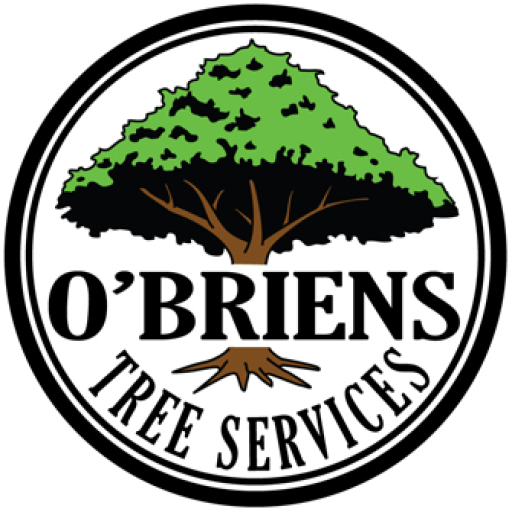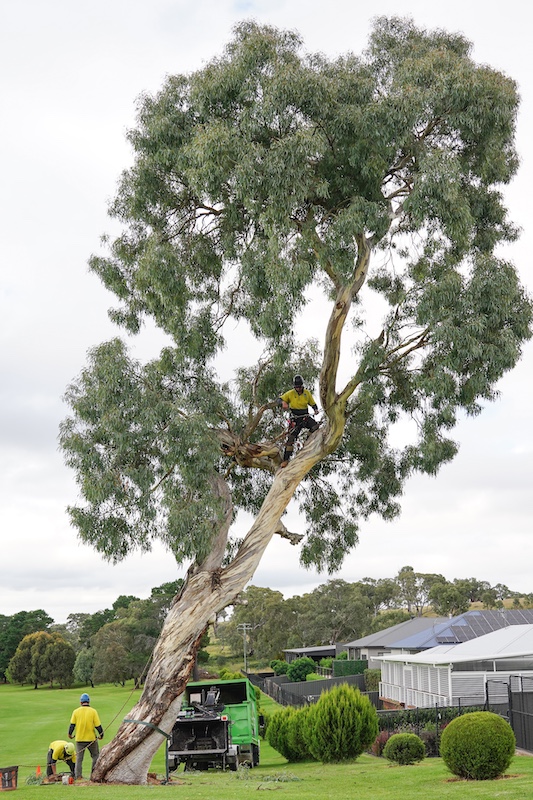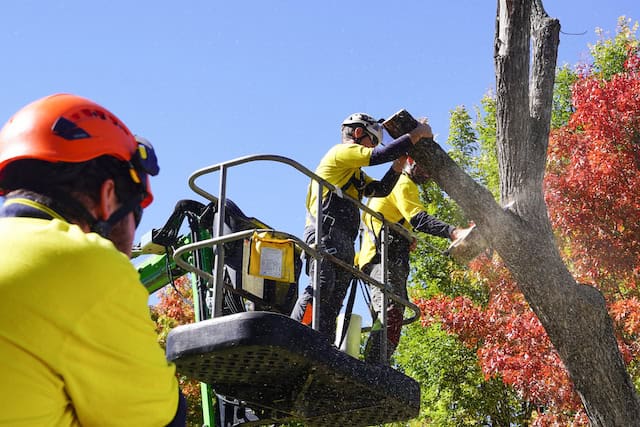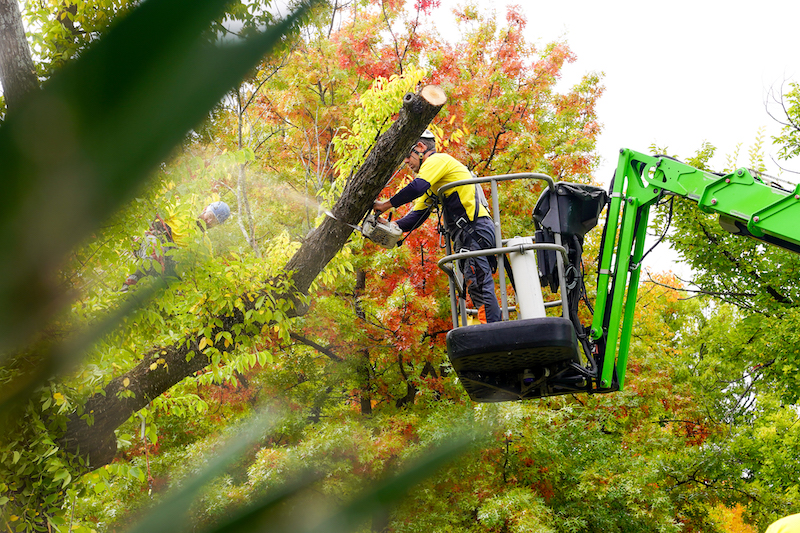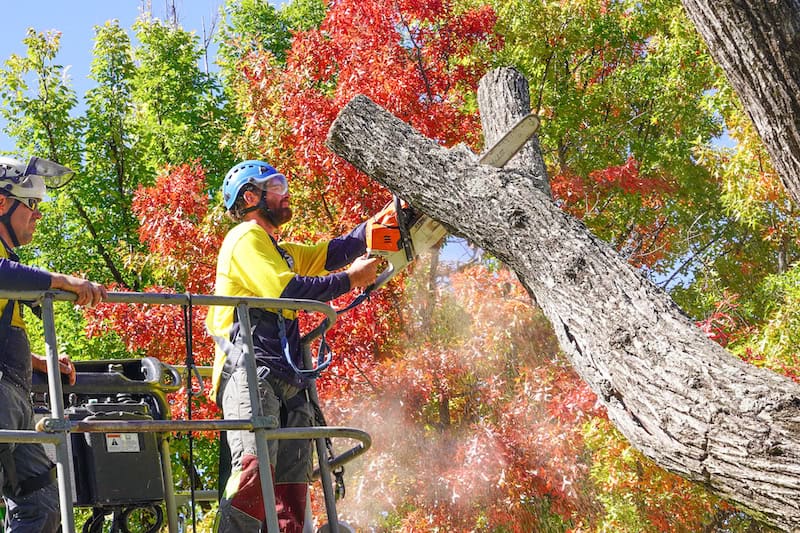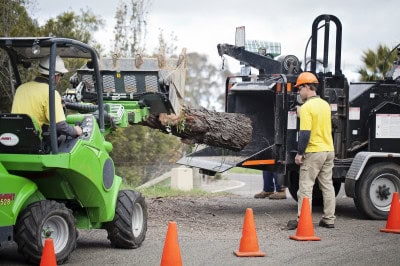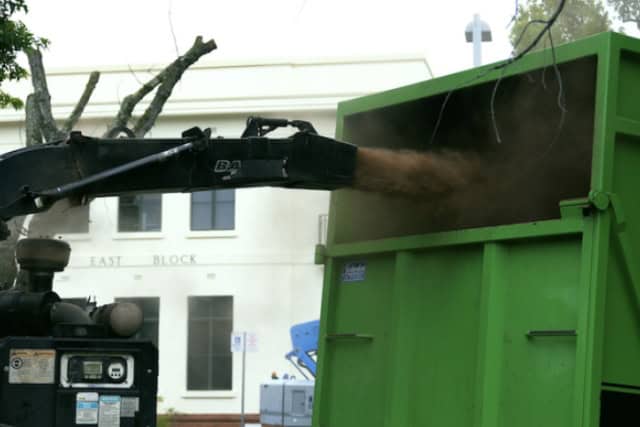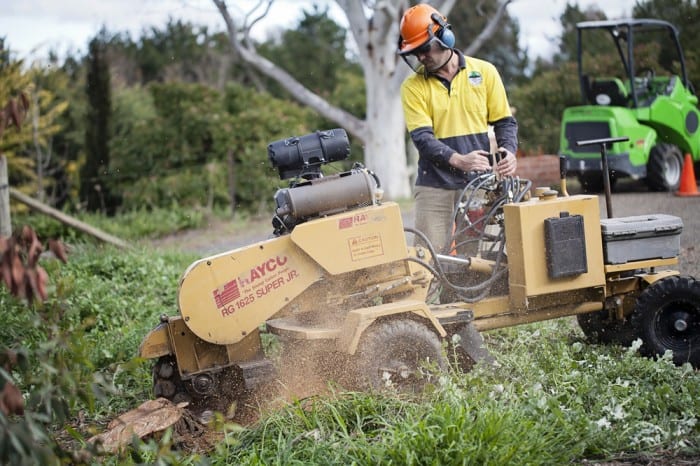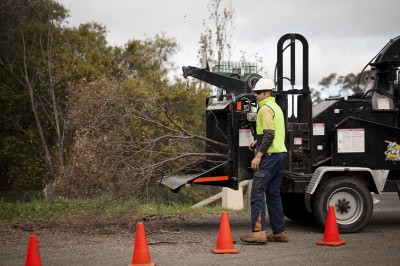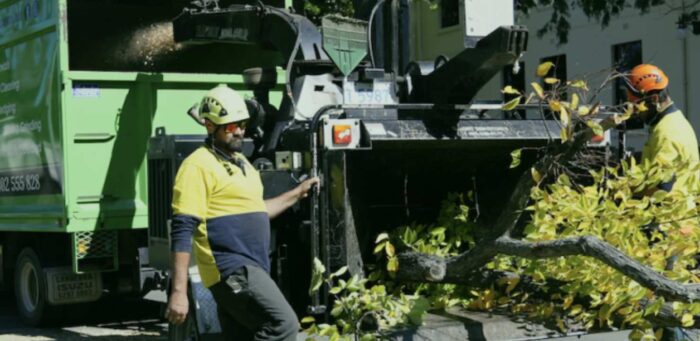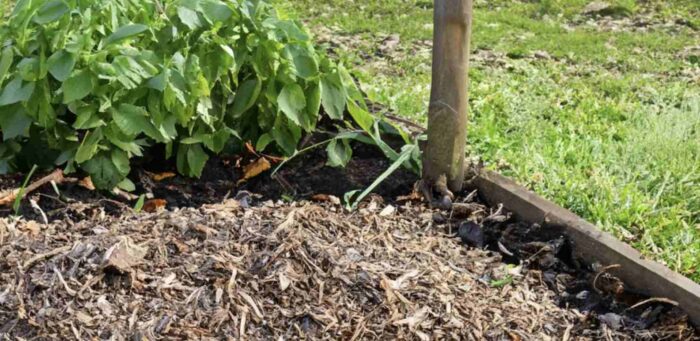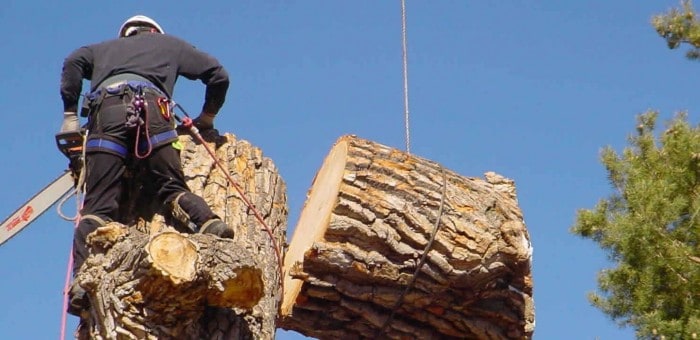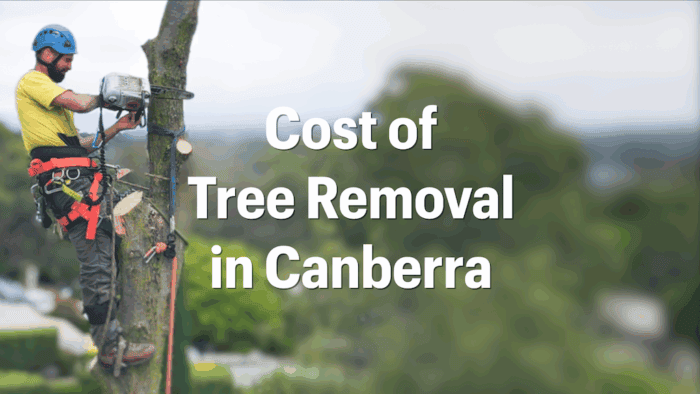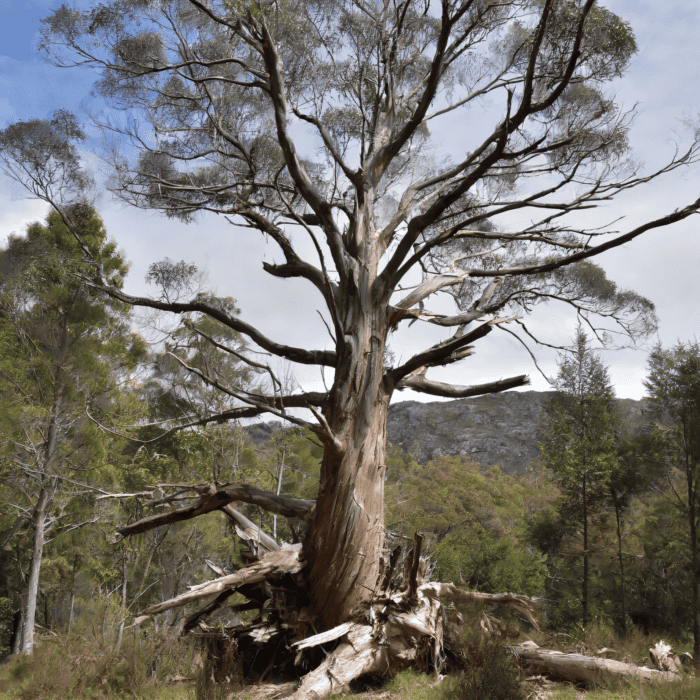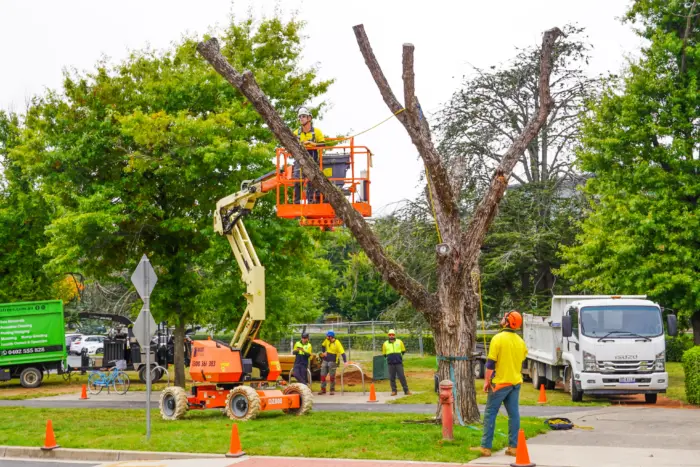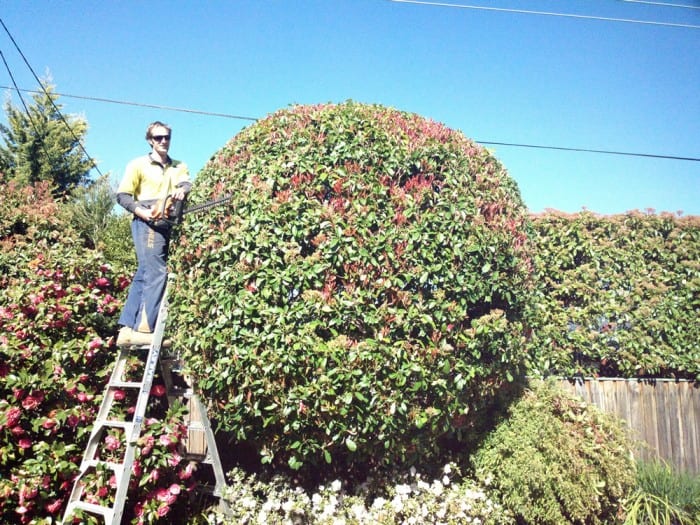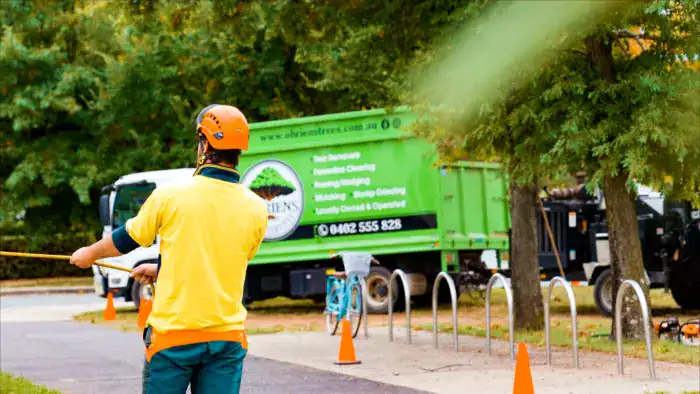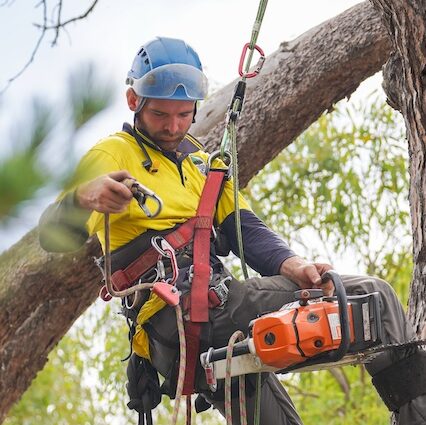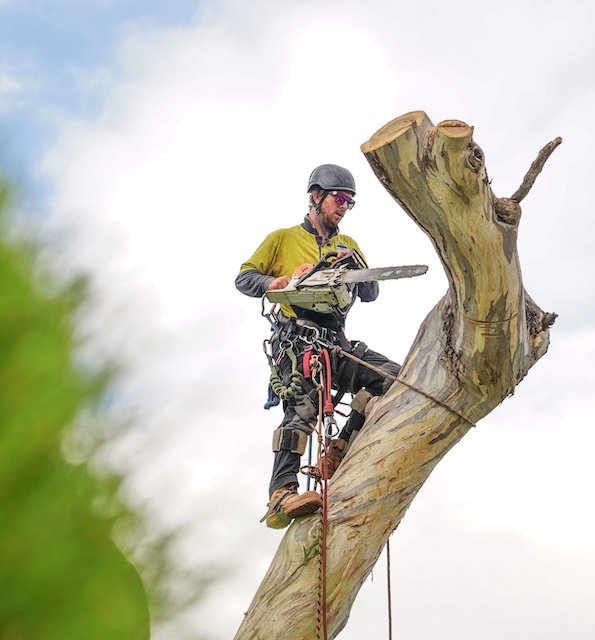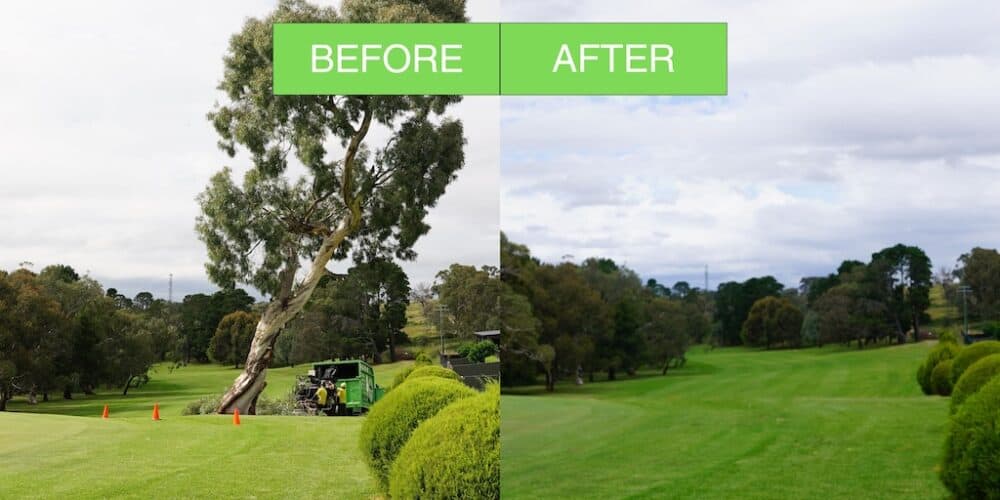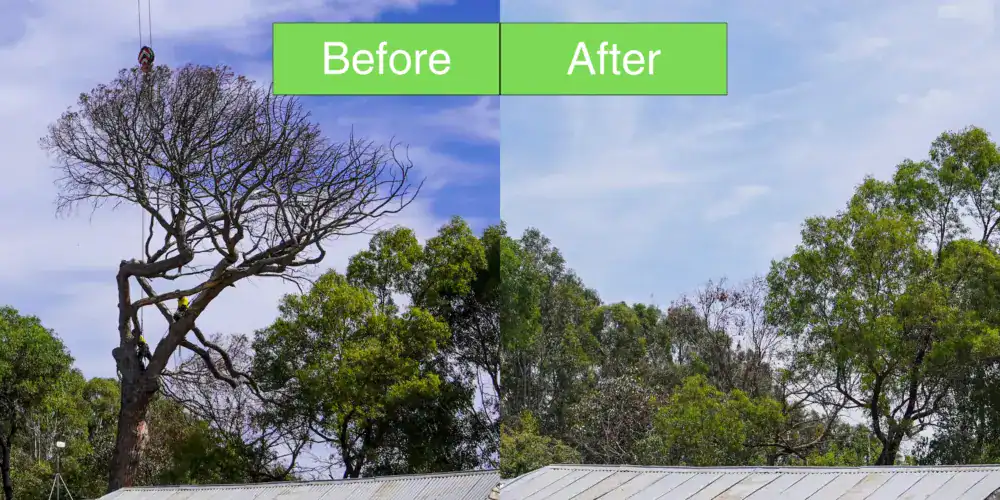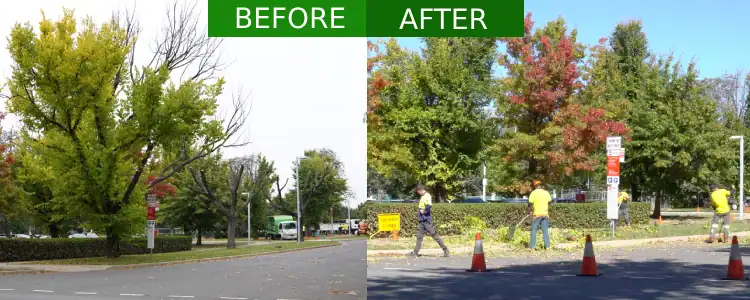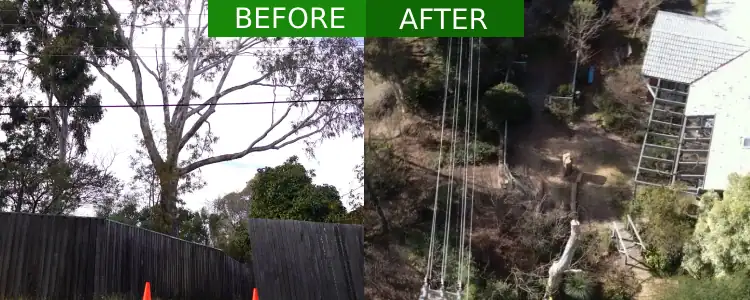Need Emergency Tree Services
Call now at (0402) 555-828
Tree Clearance from Power Lines: Power Line Safety and Responsibilities
Maintaining tree clearance from power lines is crucial for safety and uninterrupted power supply. Trees and vegetation growing too close to powerlines or utility infrastructure pose serious risks, including blackouts, fires, and electrocution. Ensuring the safety of overhead power lines requires regular maintenance and following the necessary guidelines. Here’s everything you need to know about keeping trees and vegetation clear of powerlines.
Why Tree Clearance from Power Lines is Important
Trees growing near powerlines can lead to several serious hazards:
- Blackouts: Branches touching or falling on powerlines can cause power outages, disrupting electricity to homes and businesses.
- Fire Hazards: Overgrown trees and vegetation can ignite, leading to grass fires or bushfires, especially during dry, hot seasons.
- Electrocution: Contact between trees and powerlines can cause electric shock, posing a risk to anyone in the vicinity.
- Restricted Access: Overgrown vegetation can prevent utility companies from conducting necessary maintenance on power poles, cables, and other infrastructure.
What is Considered Overhead Infrastructure?
Overhead infrastructure includes powerlines, power poles, and overhead cables. These structures require a clear area around them to ensure safe operation and maintenance access.
Four Key Points for Landowners
As a landowner or occupier, it’s your responsibility to maintain safe clearance between trees, vegetation, and powerlines. Here are four important things to remember:
Maintain Proper Clearance: Trees, shrubs, and other vegetation on your property must remain clear of powerlines and other utility infrastructure. You are legally obligated to ensure nothing encroaches on the required safety clearance zones.
Adhere to Minimum Clearances: The minimum distance between vegetation and powerlines must be maintained at all times. These clearances are designed to prevent accidents and ensure the safety of utility workers.
Only Certified Arborists Can Work Near Powerlines: It’s essential to use only ActewAGL-accredited tree surgeons when performing tree trimming near powerlines. These professionals are trained to work safely around electricity infrastructure.
Never Assume Powerlines are Safe: In the event of a power outage, whether planned or unexpected, do not assume powerlines are de-energised. Never attempt to trim trees or perform any other work near powerlines without confirmation from the utility company that the area is safe.
Legal Obligations Beyond Property Boundaries
It’s essential to note that even if powerlines or other utility infrastructure are adjacent to your property and not directly within your boundaries, you are still responsible for ensuring there is no interference. Minimum clearance requirements still apply, and failure to comply can result in legal and financial consequences.
Protecting Utility Infrastructure During Construction and Landscaping
If you are planning construction or landscaping projects, you must ensure that trees, vegetation, or built structures do not interfere with powerlines or other infrastructure. Even if you hire a draftsperson, builder, or landscaper, the responsibility for compliance lies with the property owner. Be sure to communicate these clearance requirements to any contractors you engage.
Private Power Poles: Your Responsibility
If you have a privately-owned power pole on your property, it’s your responsibility to ensure it meets safety standards. Regular inspections and maintenance are essential to prevent potential hazards.
Final Thoughts on Tree Clearance and Power Line Safety
It’s crucial to work with ActewAGL-accredited tree surgeons for any tree trimming near powerlines and to maintain regular inspections. By following proper safety standards and maintaining required clearances, you can help avoid fires, blackouts, and accidents.
For professional advice and assistance, contact us.
We offer comprehensive tree inspection and diagnosis services in Canberra, emergency tree removal Canberra, and are fully accredited to work near powerlines. Keep your property safe and compliant with our expert tree management solutions.
About Us
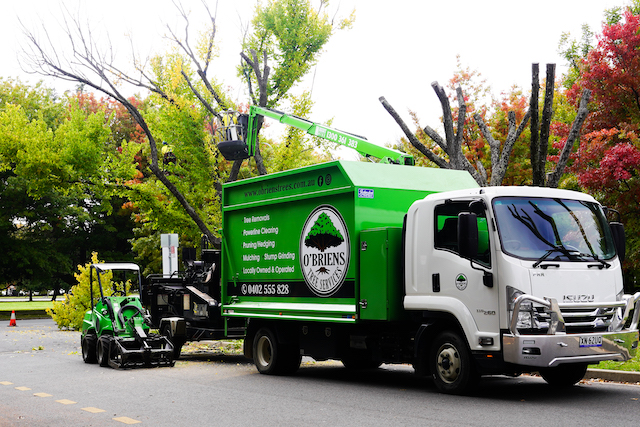
O’Brien’s Tree Services: Your Trusted Arborists Since 2006
We are a family-owned and operated tree care business, serving Canberra and it’s surroundings for over two decades. With extensive experience, we excel in tree services, from trimming to tree removal and stump grinding.
Our skilled team handles all tasks, ensuring your trees receive expert care. We proudly serve Canberra, Murrumbateman, Yass, and Queanbeyan, with no job too big or small.
Fully certified and qualified, we offer peace of mind. Contact us for a FREE QUOTE. Explore our tree services here: Tree Services in Canberra.
TREE SERVICES CANBERRA
OUR CANBERRA TREE SERVICES INCLUDE:
WE ALSO OFFER A RANGE OF EXTRA TREE SERVICES
Testimonial
Arrived on time and did a fantastic job. Very happy, thanks guys.
I highly recommend O’Briens Tree Services as a highly professional and value- for-money tree removal company. T
hey undertook the work for me in Canberra. They were extremely professional, efficient and prompt every step of the way- from first contact, inspection, quote, providing the target date and arriving on the nominated day. I had one extremely large tree approved to remove and several smaller ones. They were a hardworking team and worked safely and effectively to do all that work, as well as chipping, removal of debris and stump removal. I was amazed how much they could get done in a day and how well they did it. Not only that, but they were considerably less expensive than other quote(s). I highly recommend them to anyone needing trees removed.
- Jane Morlin, resident of Canberra
The price was very reasonable for the size of the job.
Very easy to deal with. I would give them more than 5 stars if I could.
Will have them back for any future tree work and will recommend them to any family or friends looking for tree services.
Our Latest News
Discover the Impact of Our Professional Tree Care Services
Check out our ‘Before and After’ images that illustrates the journey from untamed growth to impeccably groomed beauty. Witness firsthand the results of choosing O’Brien’s Tree Services for your tree care needs.
